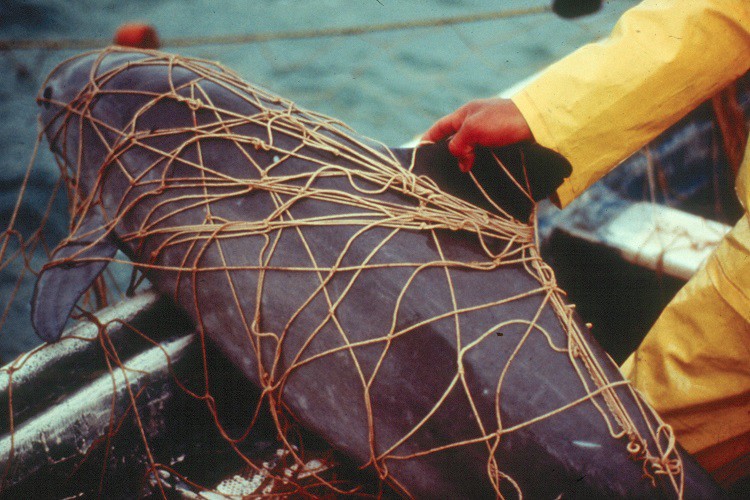Bycatch, the unintentional capture of non-target marine species during fishing activities, is one of the leading threats to dolphin populations worldwide. This invisible crisis has devastating consequences for dolphins, disrupting ecosystems and jeopardizing their survival. This article explores what bycatch is, its impact on dolphins, and what can be done to reduce this silent killer.
What Is Bycatch?
Bycatch occurs when fishing gear unintentionally traps dolphins, sea turtles, seabirds, and other marine species while targeting fish like tuna, cod, or shrimp. Fishing methods such as trawling, longlining, and gillnetting are the primary culprits. Dolphins often become entangled in nets or caught on hooks, leading to injuries or drowning as they cannot surface to breathe.
Unlike target species, bycatch is often discarded, dead or dying, back into the ocean. This practice not only wastes marine life but also causes immense suffering to dolphins and other bycaught animals.

How Does Bycatch Affect Dolphins?
Bycatch is a significant contributor to dolphin mortality. In regions like the Bay of Biscay, thousands of common dolphins die each year due to harmful fishing practices. These deaths threaten the conservation of dolphin populations and disrupt their complex social structures.
Dolphins often travel in pods, meaning that the accidental capture of one dolphin can distress the entire group. Mothers may be separated from their calves, and social bonds can be permanently damaged. The cumulative impact of bycatch contributes to population declines, placing some dolphin species at risk of extinction.
Key Regions Impacted by Bycatch
Certain regions see higher rates of dolphin bycatch due to intensive commercial fishing:
- The Bay of Biscay (Northeast Atlantic): Thousands of dolphins die annually here, washing up on French and Spanish coasts with visible injuries from nets and fishing gear.
- The Indian Ocean: Bycatch in tuna fisheries has led to dramatic declines in dolphin populations.
- The Mediterranean Sea: Illegal and unregulated fishing in this region exacerbates the bycatch problem.
These hotspots highlight the urgent need for region-specific solutions.
Why Bycatch Is Difficult to Address
Several challenges make tackling bycatch a complex issue:
- Lack of Enforcement: Even when laws exist to protect dolphins, enforcement is often weak. Countries fail to adequately monitor or penalize fishing fleets that violate regulations.
- Underreporting: Fishermen may avoid reporting bycatch incidents to evade legal or financial consequences.
- Technological Limitations: Not all fishing operations use dolphin-safe methods or gear, despite advancements that can minimize bycatch.
Efforts to address bycatch often require cooperation between governments, fishing industries, scientists, and environmental organizations.
Solutions to Reduce Dolphin Bycatch
Various strategies can help reduce dolphin bycatch and protect marine life:
- Dolphin-Safe Fishing Gear: Technologies such as pingers, acoustic devices that emit sounds to deter dolphins, can reduce bycatch. Other innovations include escape hatches in nets and circle hooks that are less harmful to non-target species.
- Seasonal Closures: Temporarily halting fishing activities during periods of high dolphin activity can significantly lower bycatch rates.
- Monitoring and Reporting: Mandating on-board observers or electronic monitoring systems ensures accurate reporting and accountability.
- Public Awareness: Consumer campaigns urging people to choose sustainably sourced seafood can pressure fishing industries to adopt safer practices.
Countries and international organizations must prioritize these solutions to protect dolphins and other marine life from unnecessary harm.
The Role of Citizens in Addressing Bycatch
Individuals can play a vital role in combating dolphin bycatch. Supporting sustainable seafood certification programs like MSC (Marine Stewardship Council) ensures that fisheries adopt eco-friendly practices. Donating to conservation organizations and advocating for stronger marine protection laws are also effective ways to contribute.
Conclusion
Bycatch remains a silent but deadly threat to dolphins, driven by unsustainable fishing practices and inadequate regulations. Reducing bycatch requires a global effort, combining technological innovation, stricter enforcement, and public advocacy. Protecting dolphins from this preventable harm is not only crucial for their survival but also for the health of the marine ecosystems they inhabit.

